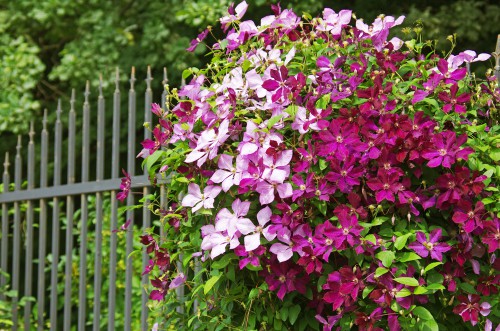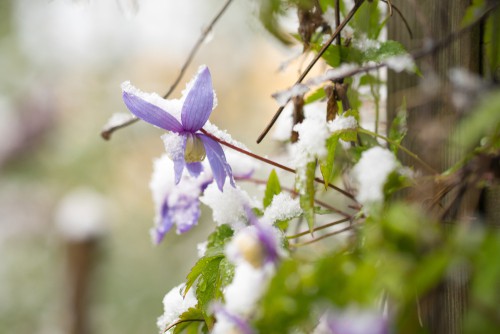Last updated on March 2nd, 2022
Our site is reader supported, this means we may earn a small commission from Amazon and other affiliates when you buy through links on our site.
Today it is quite common to make use of any space in your garden, especially vertical spaces by using climbing and flowering plants like the clematis. A clematis will bloom in spring, summer, autumn and some even in winter, dependent upon the variety you choose, which explains why so many gardeners are integrating a diverse array of plants to provide year-round flowers. But then of course you have to wonder when you should cut back your clematis. This is can sometimes be a little tricky because some flowers on the previous year’s growth (like the clematis montana) while other types flower on the current year’s growth. Prune at the wrong time and you risk cutting the following years’ flowering growth, resulting in no flowers.
Tips for Cutting Back Your Clematis
Before you cut back your clematis you need to know that first and foremost, any dead or damaged stems can be removed at any time and you don’t need a specific time of year to cut back dead or dying stems. If there are parts of your plant that have become damaged they will not be productive again, so as soon as you notice them, get rid of them. It is equally important to know when your clematis blooms. If your clematis, for example, is one of the large flowering varieties you might need to let it grow the first year and only cut it back sometime after the second year. Cutting back your clematis (pruning) should only take place once the flowering is finished.
How and When to Prune
If you prune your clematis right after it is finished flowering, there is no risk of accidentally removing the flowers for next year. This is also the appropriate time for you to cut and shape your clematis. If necessary you can remove up to one-third of the plant. When doing that, however, you should avoid removing any of the larger, woody stems. Why? Because these are the strongest and oldest, and amongst will be many groups of clematis flowers that will be produced on the stems from last year. When you are determining how and when to trim your plant make sure you don’t remove a developing bud. You will know it when you see it and if you start to see buds developing on your vines it might be the wrong time of year to prune.

Pruning Groups
There are clematis that bloom in spring and those bloom on the old wood from the previous year. These should be pruned before the end of July straight after they have finished flowering. However, these only need pruning to keep them within a specific framework. These are known as group 1 clematis.
There are flowering vines that produce flowers in the summer or autumn and those should be pruned in early spring, given that the flowers are produced on the new growth of the current year.
If you have the larger flowering hybrids these are likely to produce two rounds of flowers. You should deadhead any spent flowers immediately so that you can provide for the next set of flowers. Rest assured that the next set will appear on new growth but they’re going to be smaller than the first. These are known as group 3 clematis.
When to Cut Back Clematis for the Winter

If you are going to cut your clematis back for winter just make sure you have done so in accordance with the guidelines listed above. This includes knowing when your clematis flowers and being careful not to cut off the wood that will be required for certain bloomers. To that end, the clematis that flower on the current growth can be cut back as soon as that growth is over and it will be rejuvenated during the winter.


